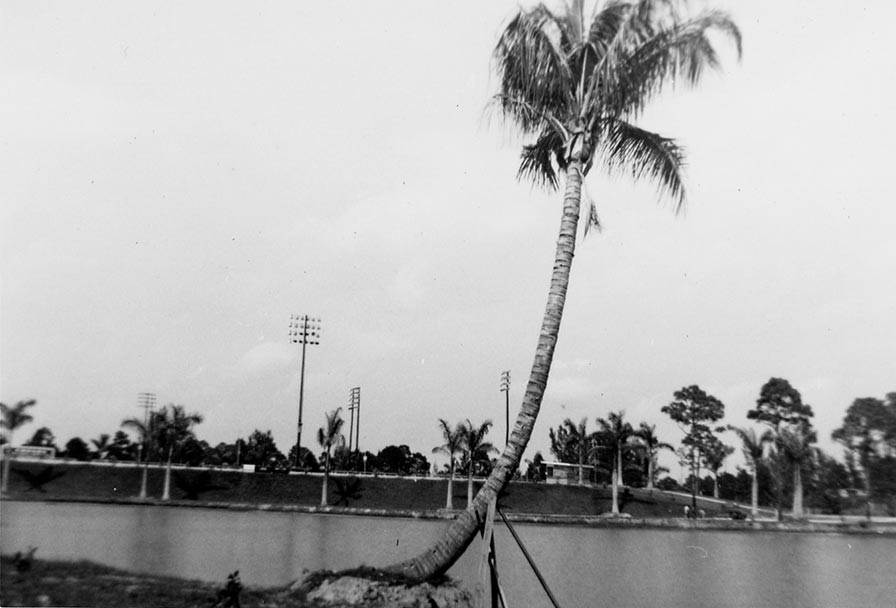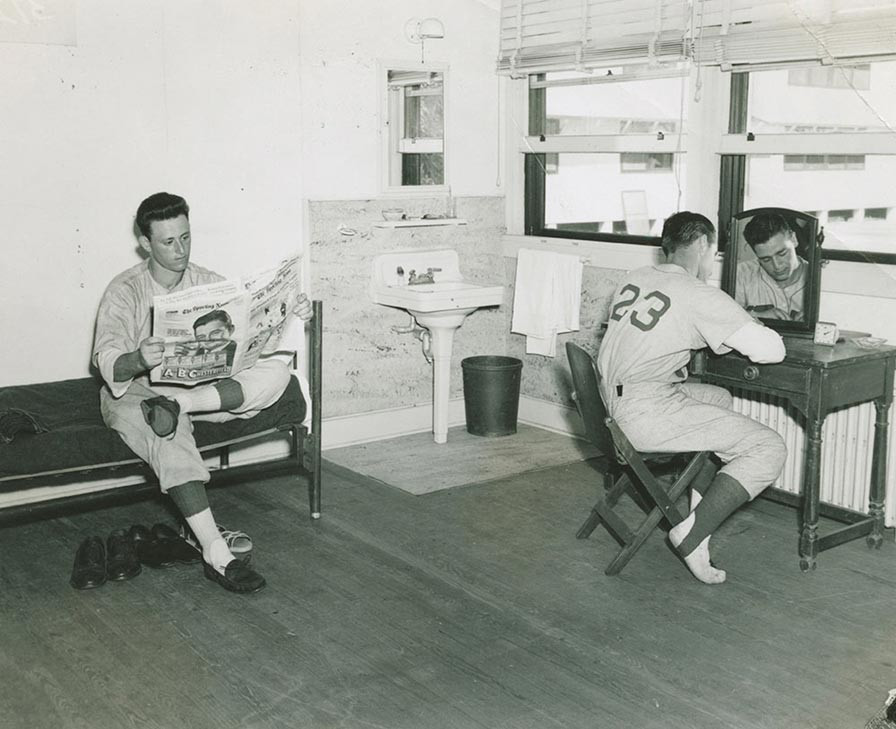This Day in Walter O’Malley History:
-
According to an account in The Sporting News, “Holman Stadium, the attractive, modern 5,000-seat ball park built here during the winter, will become even more pleasing to the eye by the transplanting of 50 magnificent royal palm trees around the enclosure. The trees have been purchased by Mrs. May Smith, widow of the late John L. Smith, who was part owner of the Brooklyn club in association with President Walter F. O’Malley and Branch Rickey. Mrs. Smith now is co-owner of the Dodgers with O’Malley. Mrs. Smith is having the royal palms put in as a permanent memorial to her husband. They were acquired from an estate in this vicinity (Vero Beach, Florida), on which the residence had been destroyed by fire.” The Sporting News, March 4, 1953
-
The Dodgers were playing an intra-squad game getting ready for the 1954 Spring Training season. George Shuba doubled down the right field line in the fourth inning, and as he pulled into second, attention was directed to the honking of a loud horn and a new 1954 automobile with Roy Campanella in the driver’s seat and Walter O’Malley as passenger. The game was interrupted as Campanella wanted to show his teammates the car he had just received for being 1953 National League MVP. After a few minutes and many photographs, Campanella drove the car off the field and the game continued.
-
The Board of Directors for the Brooklyn Dodgers unanimously approves the sale of the real property of the Ft. Worth, Texas franchise to developer Marvin Kratter and also approves the exchange of the Ft. Worth team for the Los Angeles Angels in the Pacific Coast League.
-
Walter O’Malley is a panelist on the University of Pennsylvania team during the first day of taping for the quiz show “Alumni Fun” airing on CBS-TV. Prominent alumni of colleges competed to win money for their respective schools.
-
Frank D. Morgan writes in The Sporting News about the new Master’s Degree curriculum in Physical Education with an emphasis on sports administration at Ohio University. The “father” and designer of the program is Dr. James G. Mason, who gave credit to Walter O’Malley for the idea. “When I was a the University of Miami in Florida, we spent a day at the Vero Beach training camp of the Dodgers talking to Mr. O’Malley about his ideas for such a program,” said Dr. Mason. “At first, it was designed to be a five-year undergraduate course, but later, through the encouragement of Taylor Culbert, dean of the School of Education at Ohio University, it was redesigned as a graduate course. When Mr. O’Malley moved his club to the Coast, the idea was lost in the shuffle, but my interest was rekindled several years later in discussions with Ohio athletic director Bill Rohr and, eventually, Ohio’s president, Vernon Alden. After coming to Ohio University, I recontacted Mr. O’Malley in 1966 and found him still interested in such a course of study. Many of his ideas were put to use in planning the curriculum for this new program, which itself took well over a year. O’Malley pointed out that ‘for the most part, people filling sports and recreation administration jobs today have not been trained by education to do so, but have learned their particular job by trial and error.’” The Dodgers and five other major league teams agreed to accept student trainees from the program. Frank D. Morgan, The Sporting News, March 4, 1967
-
The Dodgertown, Vero Beach, Florida base is the subject of Ron Rapoport of the Los Angeles Times. Coach Danny Ozark had been coming to Dodgertown since 1948. Ozark said, “We had 28 minor league clubs and 550 players here the first year. We slept six to a room in the old barracks. They came around and blew a whistle to wake us up…We ate off stainless steel trays. It was a lot like the Army.” Walter O’Malley explained how Dodgertown came to be in Vero Beach. “We had tried Daytona Beach and Sanford and Pensacola,” said O’Malley. “But Florida had segregation laws then – African Americans couldn’t play and we had Jackie Robinson and had determined to keep pioneering in that area.” Ron Rapoport, Los Angeles Times, March 4, 1972




